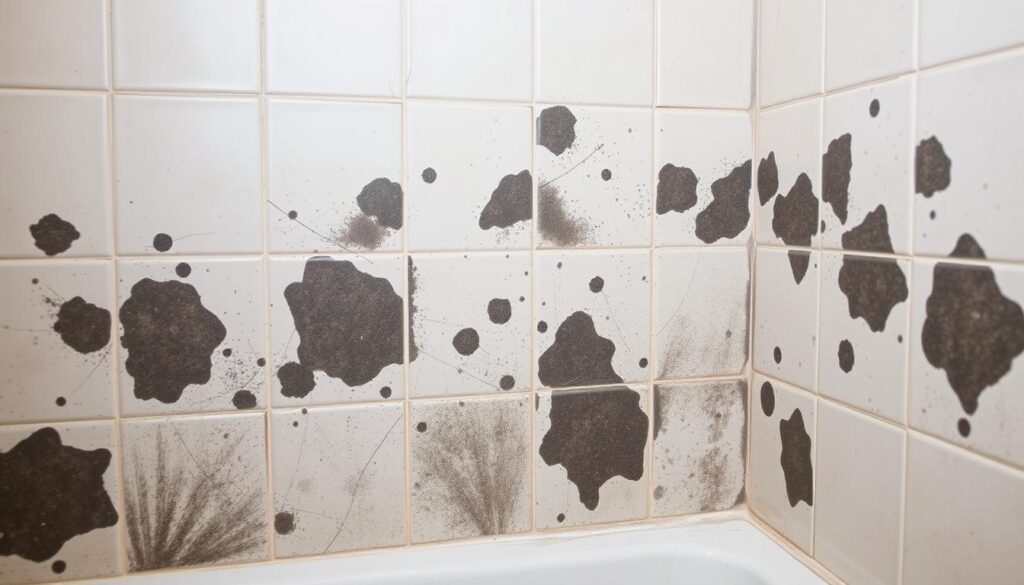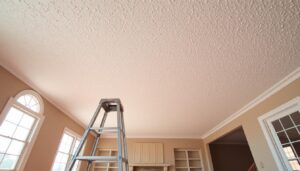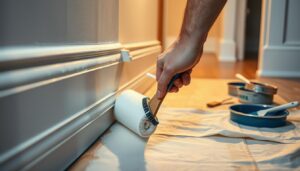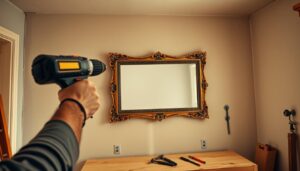Are you tired of dealing with unsightly mold on your bathroom tiles? You’re not alone. Many homeowners in the UK struggle with this common problem, which can have serious implications for both the aesthetic appeal of your bathroom and your health.
Mold thrives in damp environments, making your bathroom a prime breeding ground, especially on tile surfaces and grout lines where moisture tends to accumulate.
Understanding the root cause of this issue is crucial to finding a lasting solution. In this guide, we’ll explore why mold is a persistent problem and provide a step-by-step approach to eliminating it from your bathroom tiles.
Key Takeaways
- Recognise the signs of mold infestation and understand why prompt action is necessary.
- Learn how excess moisture contributes to mold growth in bathrooms.
- Discover the importance of regular cleaning routines in preventing mold.
- Understand why bathroom tiles are susceptible to mold despite their non-porous nature.
- Preview a comprehensive step-by-step guide to eliminating mold.
Understanding Bathroom Mold: Causes and Health Concerns
Bathroom mold is a pervasive problem that can have serious implications for your health if left unchecked. Mold thrives in damp environments, and bathrooms, with their frequent exposure to water, are ideal breeding grounds.
Why Mold Thrives in Bathrooms
Mold growth is facilitated by the humid conditions commonly found in bathrooms. When moisture is not adequately controlled, it creates an environment conducive to mold proliferation. Black mold, in particular, is known for its slimy appearance and musty smell, resembling wet soil or decay.
Health Risks Associated with Bathroom Mold
Prolonged exposure to mold can lead to various health issues. It’s crucial to understand the potential health implications, especially for individuals with respiratory conditions or weakened immune systems. Mold spores can become airborne during cleaning, potentially exacerbating health problems if proper precautions are not taken.
- Mold exposure can cause respiratory irritation and allergic reactions.
- Certain individuals, such as children and the elderly, are more susceptible to mold-related health issues.
- Distinguishing between common household molds and more dangerous varieties like black mold is essential for determining the appropriate remediation approach.
Addressing mold problems promptly is vital to prevent both structural damage to your bathroom and potential health complications. The connection between persistent bathroom mold and chronic health symptoms should not be overlooked.
Essential Supplies for Cleaning Mold off Bathroom Tiles
Before you start cleaning mold off your bathroom tiles, it’s crucial to gather the right supplies. Having the correct equipment not only makes the task more efficient but also ensures your safety during the process.
Protective Equipment You’ll Need
When dealing with mold, it’s essential to protect yourself. You’ll need gloves to prevent skin contact with mold and cleaning solutions. A face mask is also vital to avoid inhaling mold spores or harsh fumes from cleaning products. Additionally, consider wearing goggles to safeguard your eyes.
Cleaning Tools and Materials
For effective mold removal, you’ll need the right cleaning tools. A sturdy brush or an old toothbrush is perfect for scrubbing grout lines and caulk. A spray bottle is handy for applying your chosen cleaning solution evenly. You can use either commercial products or a homemade mix of water and soap. Microfibre cloths or absorbent towels are necessary for drying the bathroom tile surfaces after cleaning. For more stubborn mold, consider using a more specialized cleaning product.
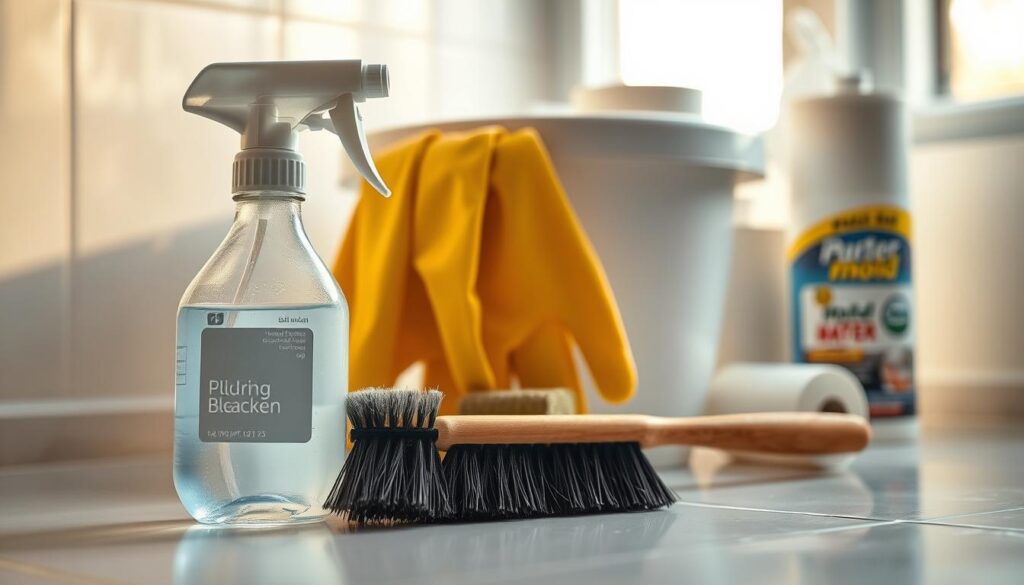
Natural Cleaning Solutions for Bathroom Mold
Natural cleaning solutions offer a safer and environmentally friendly way to tackle bathroom mold. These alternatives are not only effective but also reduce the risk of chemical exposure in your home.
White Vinegar Solution
White vinegar is a natural antibacterial agent that can help eliminate mold. Mix equal parts of water and white vinegar in a spray bottle, spray it onto the moldy area, and let it sit before rinsing.
Baking Soda Paste Method
Create a paste by mixing baking soda with water. Apply this paste to the moldy area and scrub gently. The abrasive nature of baking soda helps remove mold without damaging surfaces.
Borax Mixture for Stubborn Mold
Borax is another effective natural cleaner. Mix borax with water to form a paste, apply it to the affected area, and scrub. Borax is particularly useful for mold that’s proving difficult to remove.
Hydrogen Peroxide Treatment
Hydrogen peroxide is a powerful cleaning agent that can kill mold. Use a 3% solution and apply it to the moldy area using a spray bottle. Let it sit for 10-15 minutes before rinsing. For enhanced effectiveness, you can add a little vinegar to the solution.
These natural cleaning methods are effective for removing mold from your bathroom tiles, providing a safer alternative to harsh chemicals.
Chemical Cleaning Methods for Bathroom Mold
Chemical cleaning methods offer a convenient solution for removing mold from bathroom surfaces. If you’re not inclined to make your own cleaning solutions at home, there are plenty of bathroom cleaning products with specialised mold removal properties available in the market.
Using Bleach Solutions Safely
Bleach is a common ingredient in many cleaning products, effective against mold. To use bleach safely, ensure the area is well-ventilated, and avoid mixing it with other cleaning products. Always wear protective gloves and eyewear when applying bleach solutions to tile and grout.
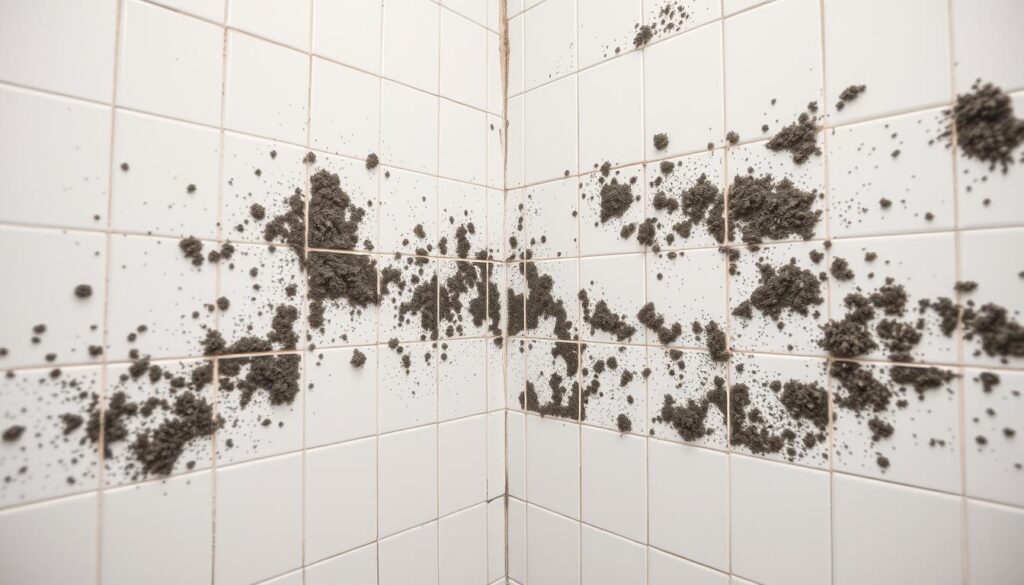
Commercial Mold Removal Products
There are various commercial mold removal products available, specifically designed for bathroom use. When selecting a product, research its effectiveness and read customer reviews to ensure you’re getting the right product for your needs. Be cautious of high-strength cleaners that can damage grout and surfaces. Opt for eco-friendly options if you’re concerned about the environmental impact.
Cleaning Mold off Bathroom Tiles: Step-by-Step Process
The key to successfully removing mold from bathroom tiles lies in a meticulous step-by-step cleaning process. This ensures not only the removal of the mold but also helps in preventing its regrowth.
Preparing the Bathroom Area
Before you start cleaning, prepare the bathroom area by removing any personal items and covering the floor and surrounding surfaces with old towels or a plastic sheet to prevent damage and make cleanup easier. Ensure good ventilation by opening windows or using an exhaust fan.
Applying Your Chosen Cleaning Solution
Apply your chosen cleaning solution directly to the moldy area, making sure to saturate it thoroughly. Whether you’re using a natural solution like vinegar or a chemical cleaner, ensure it covers the entire affected area.
Scrubbing Techniques for Different Tile Types
Different tile types require different scrubbing techniques. For smooth tiles, a soft-bristled brush is sufficient, while for textured tiles, a more robust brush may be needed to reach into the crevices. Scrub gently but thoroughly to remove the mold without damaging the tiles.
Rinsing and Drying Properly
After scrubbing, rinse the area with warm water to remove any remaining cleaning solution and mold residue. Then, dry the area completely with a towel and allow it to air dry. This step is crucial in preventing mold regrowth.
| Step | Action | Importance |
|---|---|---|
| 1 | Prepare the Area | Prevents damage and ensures safety |
| 2 | Apply Cleaning Solution | Ensures thorough coverage of the moldy area |
| 3 | Scrub the Tiles | Removes mold effectively |
| 4 | Rinse and Dry | Prevents mold regrowth |
By following these steps and ensuring the area is completely dry, you can effectively remove mold from your bathroom tiles and prevent its return. Using a dehumidifier or improving ventilation can further reduce moisture, making your bathroom less conducive to mold growth.
Tackling Mold in Grout and Caulking
Bathroom grout and caulking can harbor mold, but with the right methods, you can eliminate it effectively. Mold growth in these areas is not just aesthetically unpleasant; it can also pose health risks.
Cleaning Moldy Grout Lines
To clean moldy grout, you’ll need a grout removal tool, an old paint brush or sponge, and a diluted bleach solution. Apply the solution to the grout, let it sit for a few minutes, and then scrub the area thoroughly.
When to Replace Grout or Caulking
If the mold persists after cleaning, or if the grout or caulking is cracked or damaged, it may be time to replace it. This is especially true for areas around the shower or bathroom where moisture is prevalent.
Tools for Grout Cleaning
Various tools can aid in grout removal and cleaning. A grouting squeegee and gloves are essential for applying new grout. Here’s a summary of the tools needed:
| Tool | Purpose |
|---|---|
| Grout removal tool | Removing old grout |
| Old paint brush or sponge | Applying cleaning solution |
| Grouting squeegee | Applying new grout |
| Gloves | Protecting hands during grouting |
For effective tile and grout cleaning, selecting the right brush stiffness for your specific grout type is crucial.
Preventing Future Mold Growth in Your Bathroom
To keep your bathroom free from mold, it’s essential to understand the importance of prevention. Regular cleaning and maintenance are crucial in reducing the likelihood of mold appearing and growing in the grout. By adopting a few simple habits and making some adjustments to your bathroom routine, you can significantly reduce the risk of mold growth.
Improving Bathroom Ventilation
Proper ventilation is key to preventing mold growth. Ensure that your bathroom is well-ventilated by installing an extractor fan or improving airflow by opening windows after showering. This will help to reduce moisture levels, making it more difficult for mold to thrive.
Daily Habits to Reduce Moisture
Simple daily habits can make a significant difference in preventing mold growth. After each use, wipe down shower surfaces and squeegee the shower walls to remove excess water. Additionally, ensure that the bathroom floor is dry and free from standing water.
Regular Maintenance Schedule
Establish a regular cleaning and maintenance schedule to prevent mold growth. Clean your bathroom regularly, paying particular attention to areas prone to moisture, such as the shower and grout lines. A consistent cleaning routine will help to prevent mold from becoming established.
| Maintenance Task | Frequency |
|---|---|
| Clean shower and bathtub | Weekly |
| Check and clean grout lines | Monthly |
| Inspect caulking and seals | Quarterly |
Conclusion
To maintain a mold-free bathroom, it’s crucial to understand the root causes of mold growth and implement a combination of cleaning techniques and preventative measures.
By following the steps outlined in this guide, you can effectively get rid of bathroom mold and prevent its return. Regular maintenance, including improving ventilation and reducing moisture, is key to a healthier bathroom environment.
Remember, addressing bathroom mold promptly is essential for both aesthetic and health reasons. With the right approach, you can maintain a cleaner, healthier bathroom. For severe or recurring mold issues, consider seeking professional help.
